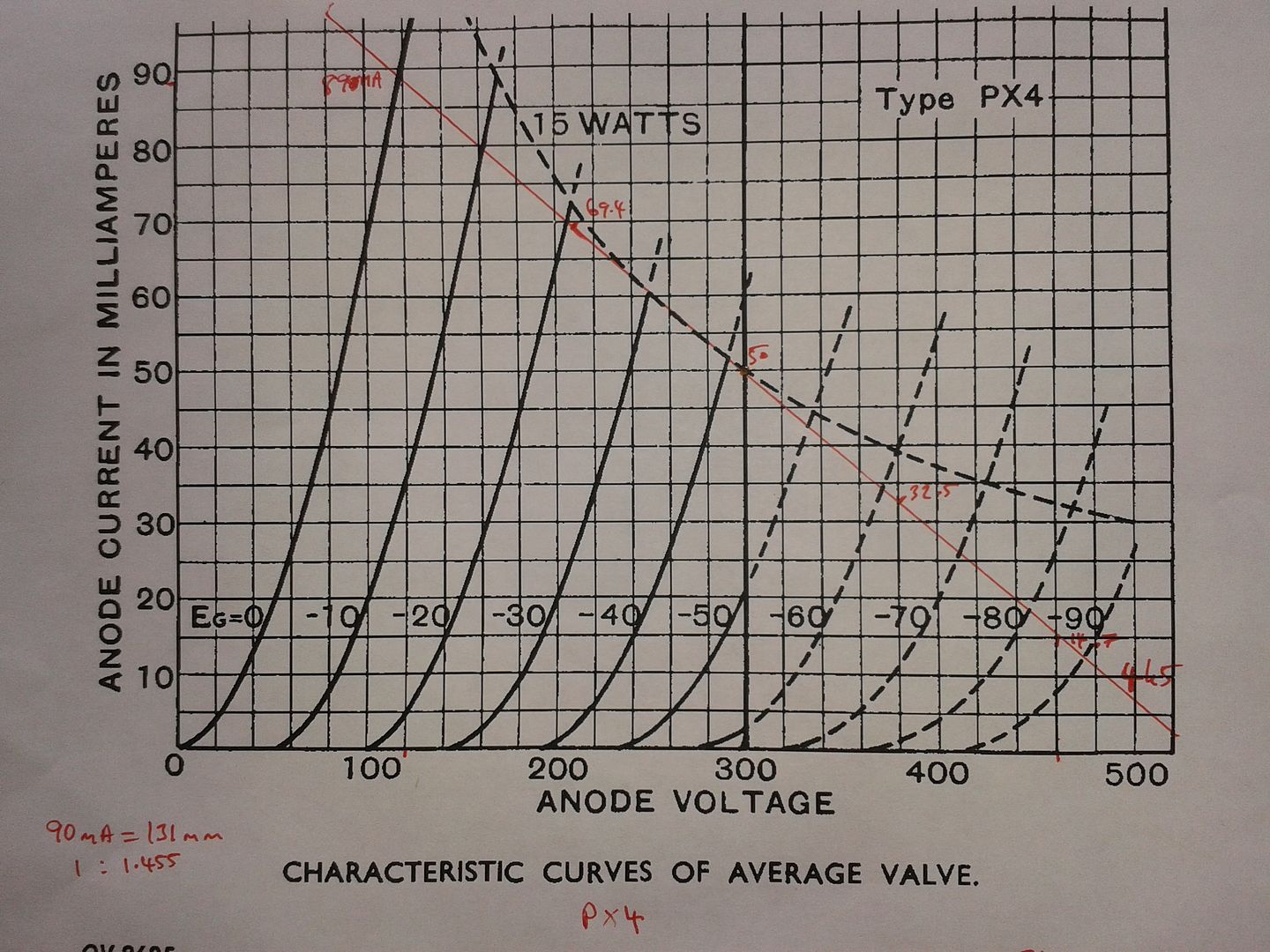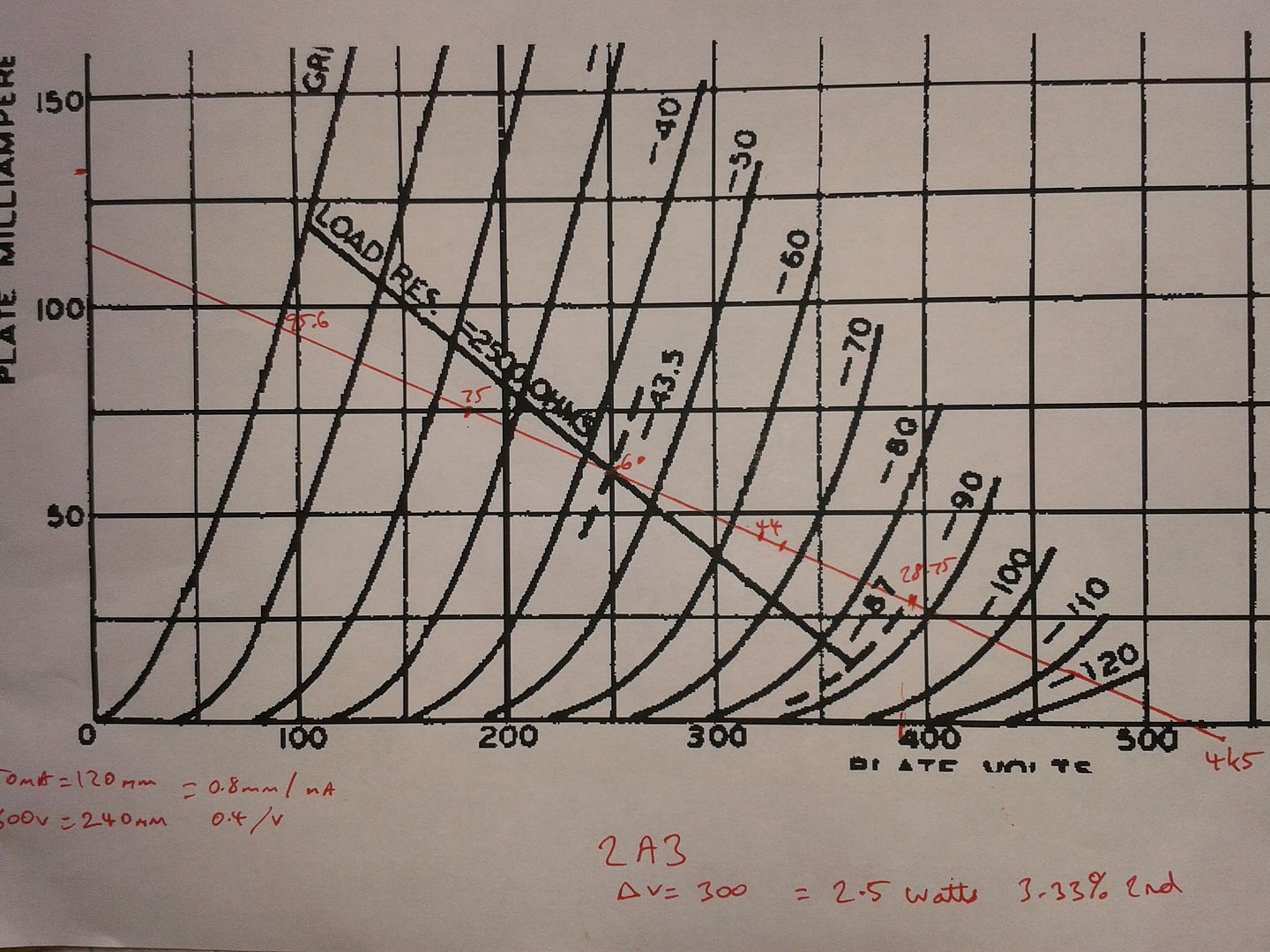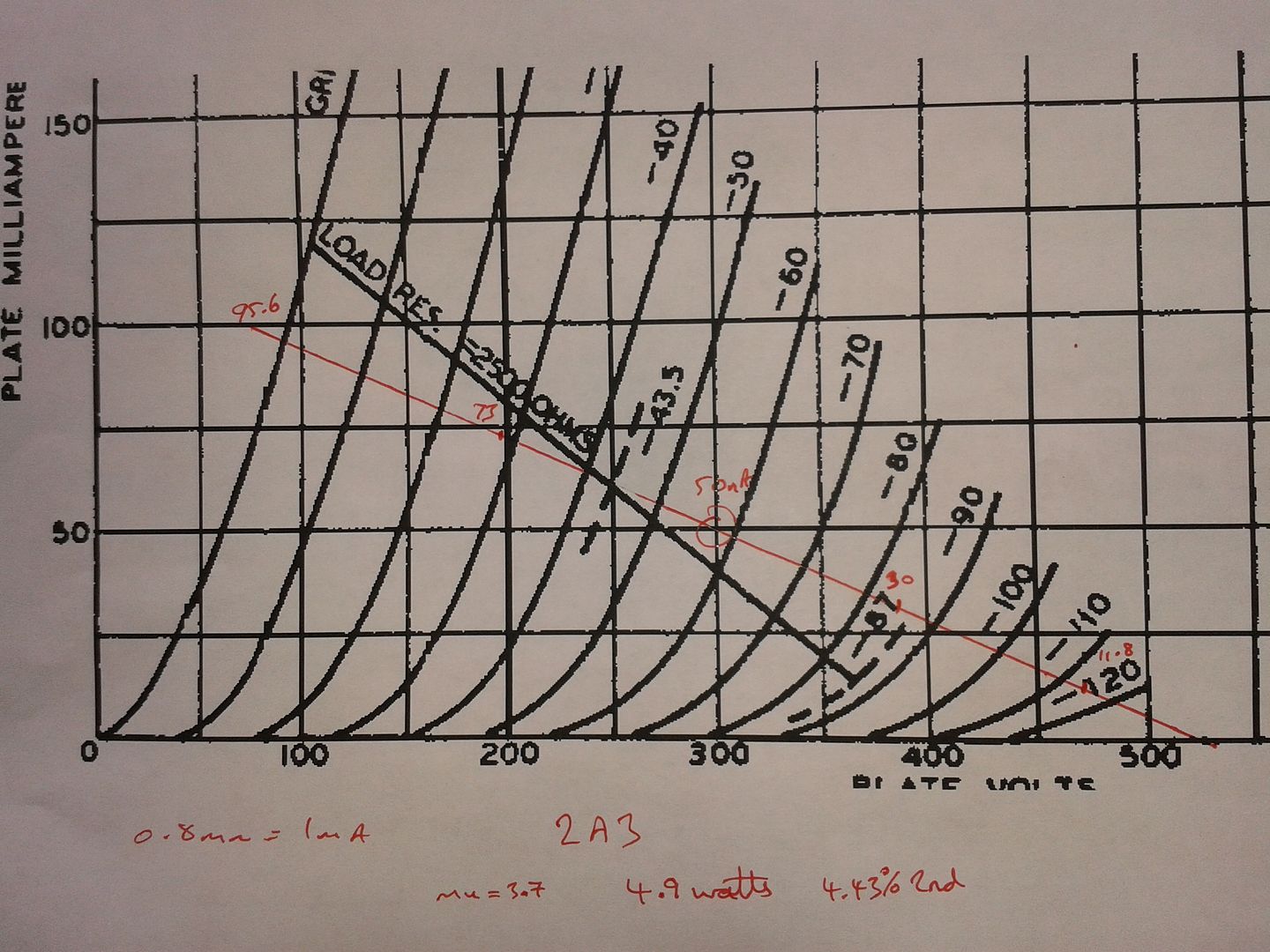I supplied the poor condition aluminium sheet and he has made wooden cases to fit like a glove. I don't know how he does it.
the one I have punched before I sent it to him is for the amplifier the blank one is the power supply.
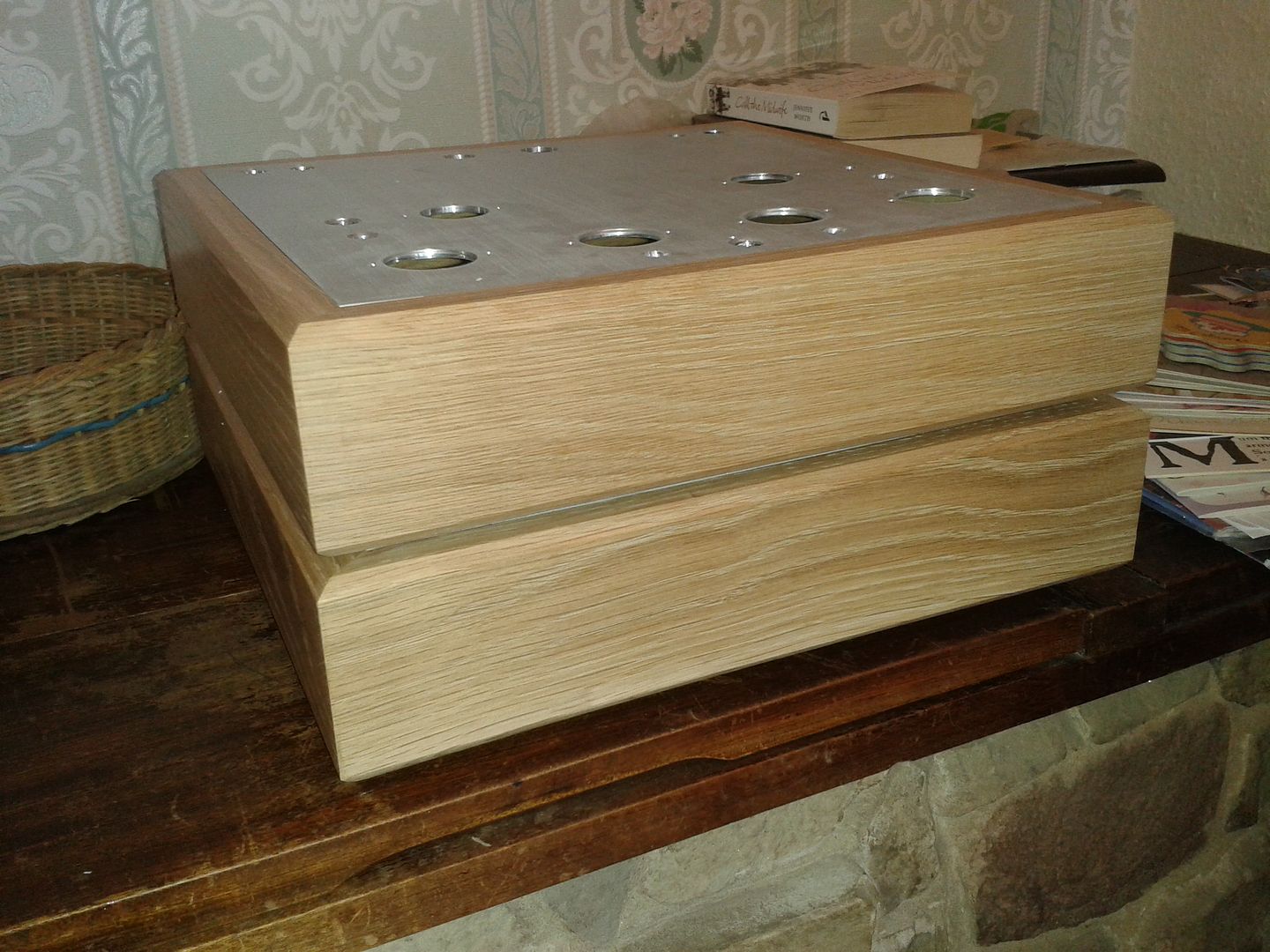
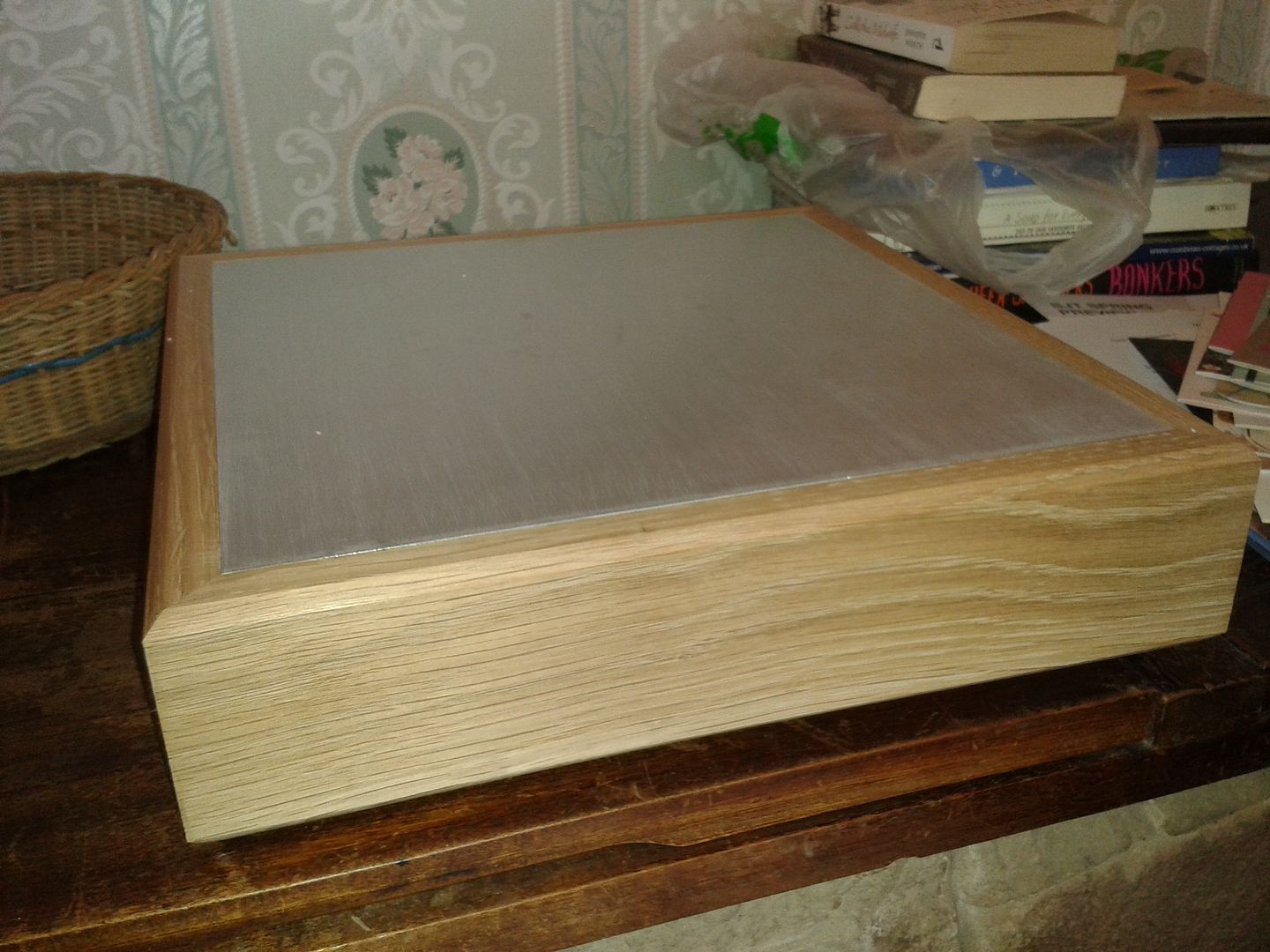

The eagle eyed will have zoomed in on the rough schematic so I had better give a brief talk through.
I wanted to not use any capacitors in the amplifier part. The power supply could go capacitorless eventually but that had better start with capacitors or it will never get built.
For direct coupling the diy community normally builds "free lunch" "DRD" or "Monkey" clones or adaptations.
all of those have the cathode resistor which needs a bypass. I last direct coupled with VR tubes in place of those resistor capacitor combinations. I think the vr tube cloning sounded pretty dam fine, but as has been pointed out by others vr tubes are not without distortion. Though to my ears they sound better than capacitors, there are other ways.
what we are doing ultimately is level shifting.
The other way to level shift with VR tubes is to pull some current to light the vr tube and place it between the two valves where the capacitor would otherwise go. The level designed is quite certain within the variance of the vr tubes which can be discovered on a test rig. Certainly for a single stage this is a valid solution. But we still have the vR tube in the signal path.
So I decided to try the very old technique of a resistor devider. Not at all efficient, but you are swapping your capacitor for resistors. Once perfect devision is arrived at on test two 1/2 watt Tantallum resistors could be inserted, and now your coupling mechanism is highest quality available. Compared to copper foil silver wired caps much cheaper, and probably sound better anyway.
More soon, Azda deliver just arrived.
